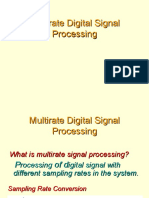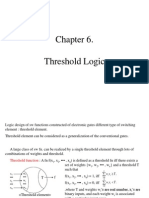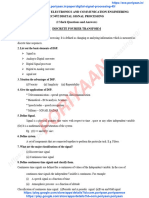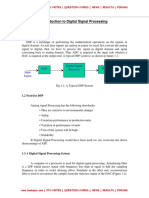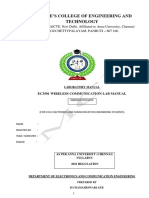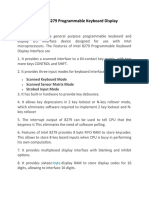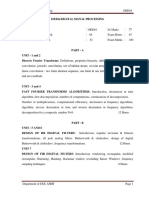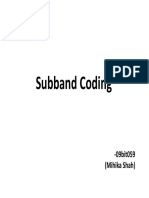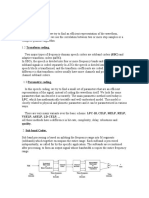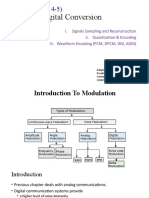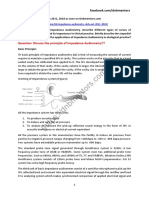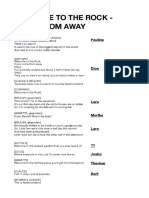0% found this document useful (0 votes)
603 views11 pagesSubband Coding: Presented by DR.R Murugan NIT Silchar
Subband coding is a transform coding technique that decomposes a signal into multiple frequency bands and encodes each band independently. It separates the source output into bands of different frequency using digital filters like low pass and high pass filters. The subband coding process involves analysis using filtering and downsampling, quantization and coding of the subband signals, and synthesis using reconstruction filtering and upsampling to recover the original signal. It is commonly used for audio and image compression applications.
Uploaded by
R MuruganCopyright
© © All Rights Reserved
We take content rights seriously. If you suspect this is your content, claim it here.
Available Formats
Download as PPTX, PDF, TXT or read online on Scribd
0% found this document useful (0 votes)
603 views11 pagesSubband Coding: Presented by DR.R Murugan NIT Silchar
Subband coding is a transform coding technique that decomposes a signal into multiple frequency bands and encodes each band independently. It separates the source output into bands of different frequency using digital filters like low pass and high pass filters. The subband coding process involves analysis using filtering and downsampling, quantization and coding of the subband signals, and synthesis using reconstruction filtering and upsampling to recover the original signal. It is commonly used for audio and image compression applications.
Uploaded by
R MuruganCopyright
© © All Rights Reserved
We take content rights seriously. If you suspect this is your content, claim it here.
Available Formats
Download as PPTX, PDF, TXT or read online on Scribd
/ 11




